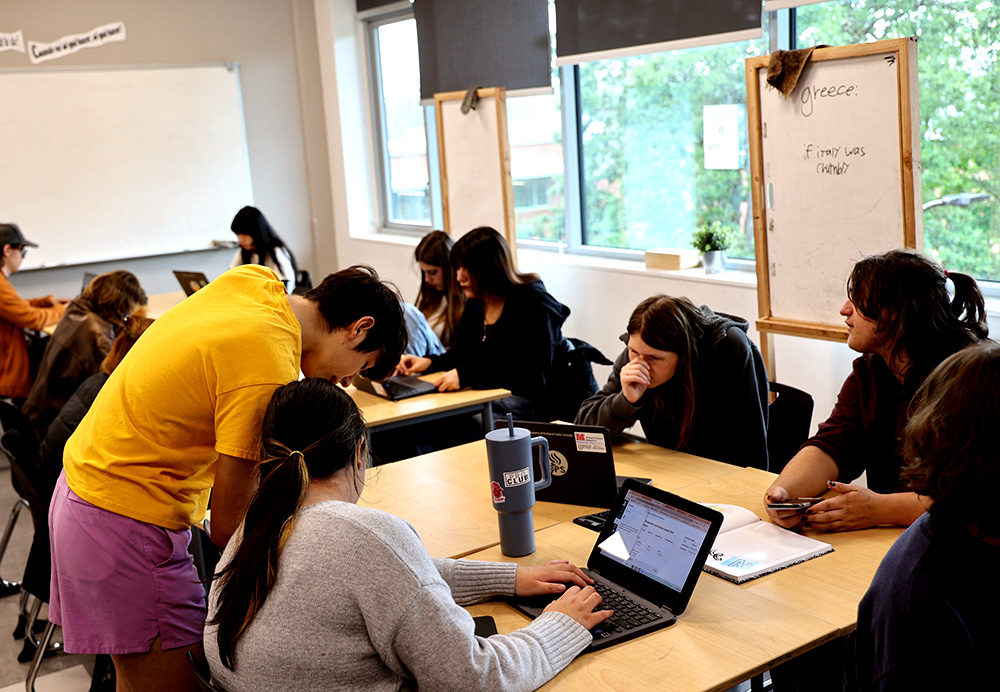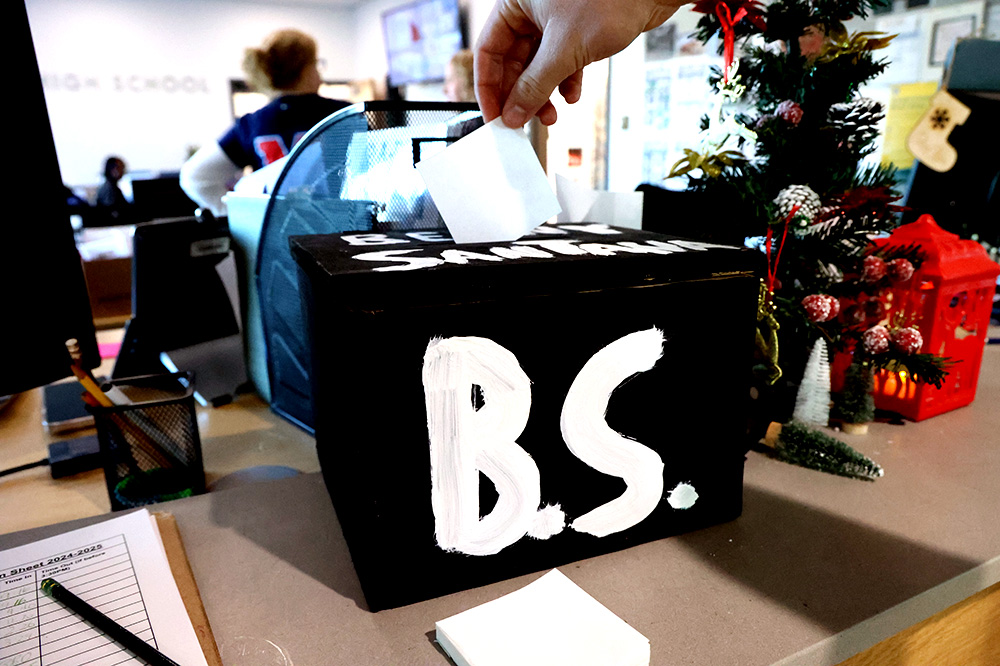The geometry curriculum will include a semester of statistics effective this fall. A district work group was formed in 2023 to serve the purpose of allowing educators to collaborate and form a reorganized curriculum for geometry and data reasoning. McDaniel, along with three other schools, will pilot the class next school year.
The new course for geometry would see one semester of data reasoning, consisting of a combination of the statistics units previously included in Algebra 1-2 and 3-4, followed by a scaled-down second semester of geometry. Topics like coordinate geometry and circles will be removed from the class and shifted to another course that is yet to be determined.
This decision to change the pathway comes in adherence to state standards set by the state in 2021, outlining a new 2+1 model. This model shifts the state away from its previous three-credit linear pathway to a two-credit linear pathway with an additional specialized math class—a +1 class—of the student’s choice. The ODE states that the 2+1 model accounts for a social shift from the value of general understanding of math concepts to application and reasoning. This includes a layout for a semester of data reasoning and a semester of geometry.
The 2+1 model does not come without some hesitancy, though.
“I initially thought a different third year option would be great, as some students are not going into fields that require higher levels of math, and they could benefit from a different approach to math,” algebra teacher Misty Koenig said. “While I still believe that to be the case, I am concerned that some universities are requiring advanced algebra and won’t recognize other third year options as fulfilling their requirements.”
Geometry teacher Doug Mella said that the changes to the geometry class are a natural progression. He believes that the universities that currently do not accept the additional specialized course as an alternative to Algebra 3-4 will eventually, though it may take time.
“Basically, in this world, we’re realizing that statistics is big and that a lot of professions require statistical knowledge,” Mella said.
The current state of the math pathway may hinder the teaching of data reasoning in some classrooms. Math teacher James Coombs explained that, in some cases, the statistics units mixed into required math classes don’t get taught.
“If you’re teaching an algebra class and you’ve got to throw a unit of statistics in, well, when it’s getting down to crunch time, what gets cut?” Coombs said.
He believes a dedicated semester would help remedy this issue.
Data science was a potential +1 class piloted last year and taught by Coombs that falls under the umbrella of data reasoning. It focused on the application of statistics to real life through presenting data.
Senior Meredith Gifford took data science because she felt that the content would be applicable to real life and was an alternative to more traditional options.
“For me, I’m not really a math person,” Gifford said, “which is why I was excited that there was a class like data science that was still math but not pre-calc or calculus or something.”
Gifford enjoyed the content of the class, which included building and understanding data models, because it was relevant to her career interests.
“I definitely understand how data models, graphs, charts work way more, and I think I’m more equipped to build them,” she said. “And so, going into fields where I might be analyzing the movement of people over time, or that sort of thing, I’m more equipped to understand those sorts of data sets.”
Data science did not have enough student interest to be offered this year, but it may make a return.
“I think they do plan on having it next year,” Coombs said, “and hopefully as it goes on, there’ll be more and more interest to make it a bigger draw.”
Gifford thinks that the semester of statistics could help students better understand the data that they see through a more critical lens.
According to Mella, the work group has yet to tackle the intricacies of +1 classes. However, the deliberation around geometry and statistics should conclude at some point this summer and give teachers time to prepare for the changes in fall.














